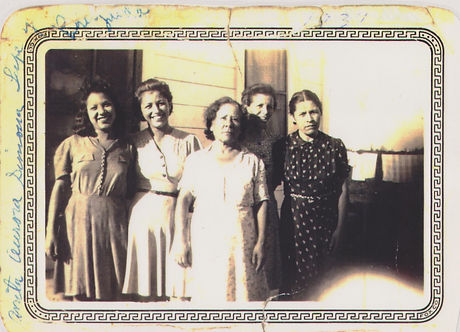
Our Roots
Centuries of Ancestral Knowledge
Brujería, the Spanish language word for “witchcraft,” is typically used to refer to various spiritual practices that have been used by African, Caribbean, and indigenous Latin American populations for centuries. The West-African Yoruba religion, for instance, is estimated by some anthropologists to have been practiced for thousands of years. And Santería (also known as Lucumi) is an Afro-Cuban religion that took shape alongside the rise of Spanish colonization—and the arrival of Roman Catholicism—in Latin America in the 15th and 16th centuries. Today, brujería—and its accompanying bruja (Spanish for witch) title—are being taken up by a growing community of primarily Latinx women and femmes who want to tap into the mysticism of their heritage, often sharing images of their practice through social media or incorporating bruja culture into their creative pursuits.

Runs Up Mountains' abuelo Jose Ynostrosa, circa 1978
As a result of colonization, indigenous communities were forced to convert to Catholicism or Christianity, thus their religion became invalidated. The demonization of natural spiritual practices eventually led to the persecution of healers throughout the Caribbean, South America and Central America.
Brujeria or "witchcraft" has been passed on from generation to generation despite the racism, oppression, and isolation of the spiritual practices. What was once obscure has now come to the cultural forefront by young people who identify as brujas, and who want to embrace their history and culture.
The rituals involved with brujería have always been meticulously passed down from ancestors The practices typically involve cleansing, ancestor worship, lighting candles, and honoring the earth (through goddesses Oshun and Elegua, for instance). And in some cases, such as in NoNo’s practice of Santería, ceremonies entail wearing all-white, singing, and preparing sacred offerings.

Runs Up Mountains and his Ama, picking herbs and flowers, circa 1966 San Saba, TX
During this time, women who practiced brujería were typically healers, midwives, and vendors of food and alcohol. And while mysticism was practiced with all sorts of intentions by both sexes, sexual and romantic rituals performed by women were particularly prevalent.



